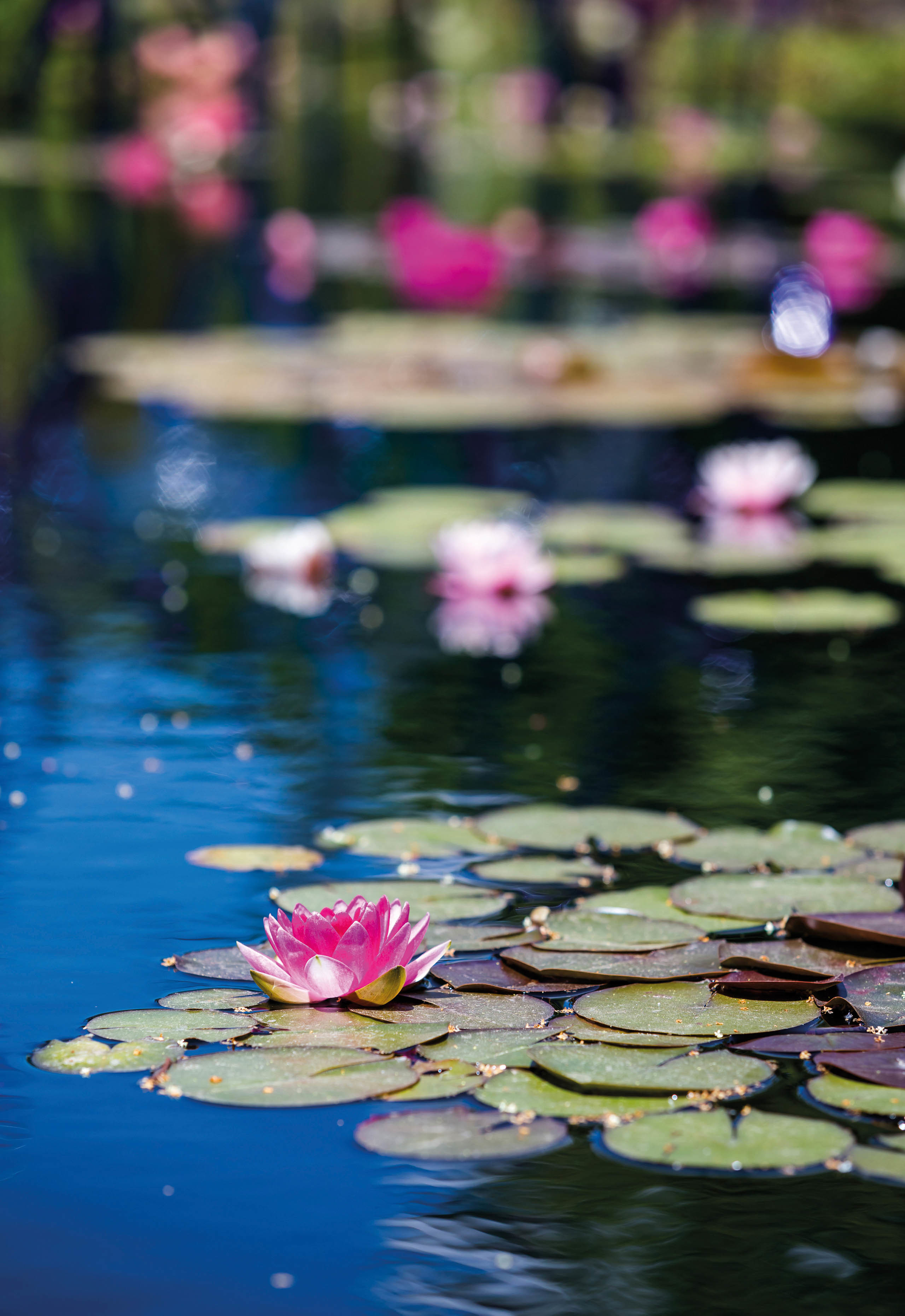Introducing New Plants to the Garden Pond
When it comes to adding plants to the pond, this can be done at any time of year, although most people prefer to do so during spring and summer when outdoor conditions are more agreeable. If plants are added during the winter months, many species will be undergoing dormancy at this time but will start growing on once the weather warms up and encourages them. Most fish species will thrive in the presence of aquatic vegetation, but unfortunately plants are not always a wise combination with koi, as they are somewhat proficient at uprooting them (more on this later).
Rather conveniently, most aquatic plants can be purchased already potted-up in mesh baskets, with the exception of floating oxygenators, which tend to be sold as loose bunches. These potted plants can be placed straight into the pond without the need to buy additional baskets or compost. However, if you wish to give them more space from the outset, or if you wish to group several specimens together, you can purchase mesh baskets of various sizes and shapes (round, square, kidney etc) which you can then line with hessian and partially fill with aquatic soil before placing the plants where you want them, and topping off with more aquatic soil and a layer of gravel. Tall plants in small individual containers may be prone to blowing over on windy days, so grouping several specimens together within one heavier basket should prevent this from happening. Naturally, over the course of the year, the plants should bush out and the following season may need re-potting into larger containers as detailed above.
Click Here for Pond Plant Accessories
The plant species that you opt for will be governed by the size and depth of the pond, whether it has shelves (and at what depth these are), and of course, personal preference. Many water gardeners choose a mix of upright marginal plants, along with a selection of plants that grow horizontally across the pond's surface creating rafts (these are very helpful to all sorts of wildlife), a few floating plants/oxygenators, and if the pond is large enough, maybe a water lily or two.
Choosing an appropriate species of water lily for your pond may seem quite daunting due to the sheer number available, but most are placed within one of four general categories: dwarf, small, medium, and vigorous - the latter being unsuitable for most garden pond situations. Once you have worked out the surface area of your pond, choosing a water lily from the remaining three categories should be a bit more straightforward. Ideally you need to pick a lily (or lilies) which, when fully grown, still leaves at least 50% of the pond surface uncovered. So even if you buy more than one water lily plant, the same rule applies: the combined maximum total cover when fully grown should not exceed 50% of the pond's surface. Again, from year to year, water lilies may need replanting into larger containers.
A final note on plants for koi ponds. Marginal plants such as irises can be grown at the sides of the pond if provision is made during the building for some relatively shallow shelves around the edge. Koi tend to uproot plant life in deeper areas through their natural browsing of the bottom of the pond in their ongoing search for food items. A barrier of sturdy rocks would need to be placed towards the front of the shelves to prevent the koi from getting at the marginal plants and harming them, and this barrier will also hold back the planting medium to stop it from entering the pond, whilst still allowing the passage of a small amount of water to keep the plant roots nice and moist. There are also koi-resistant planting containers, sinking net protector plant surrounds, and floating plant protector islands that allow plants such as water lilies to be grown in the deeper areas of the pond, the wide leaves of which will provide welcome shade for the fish on really sunny days.




